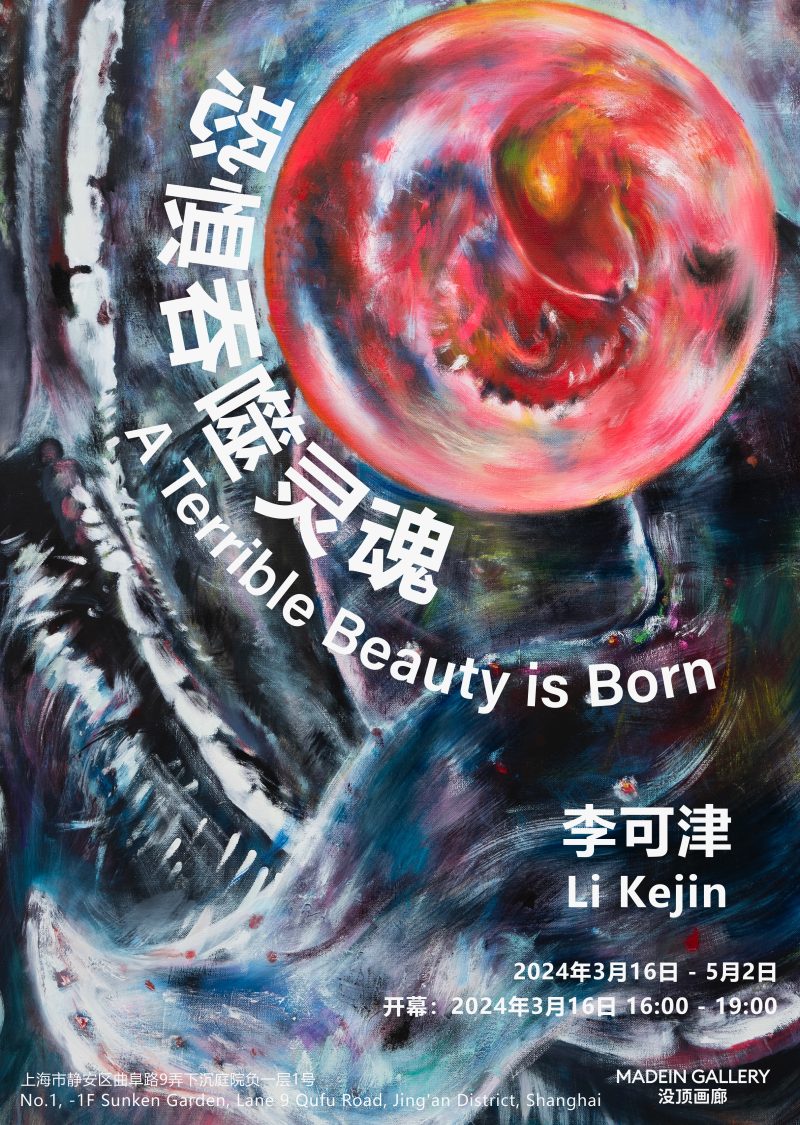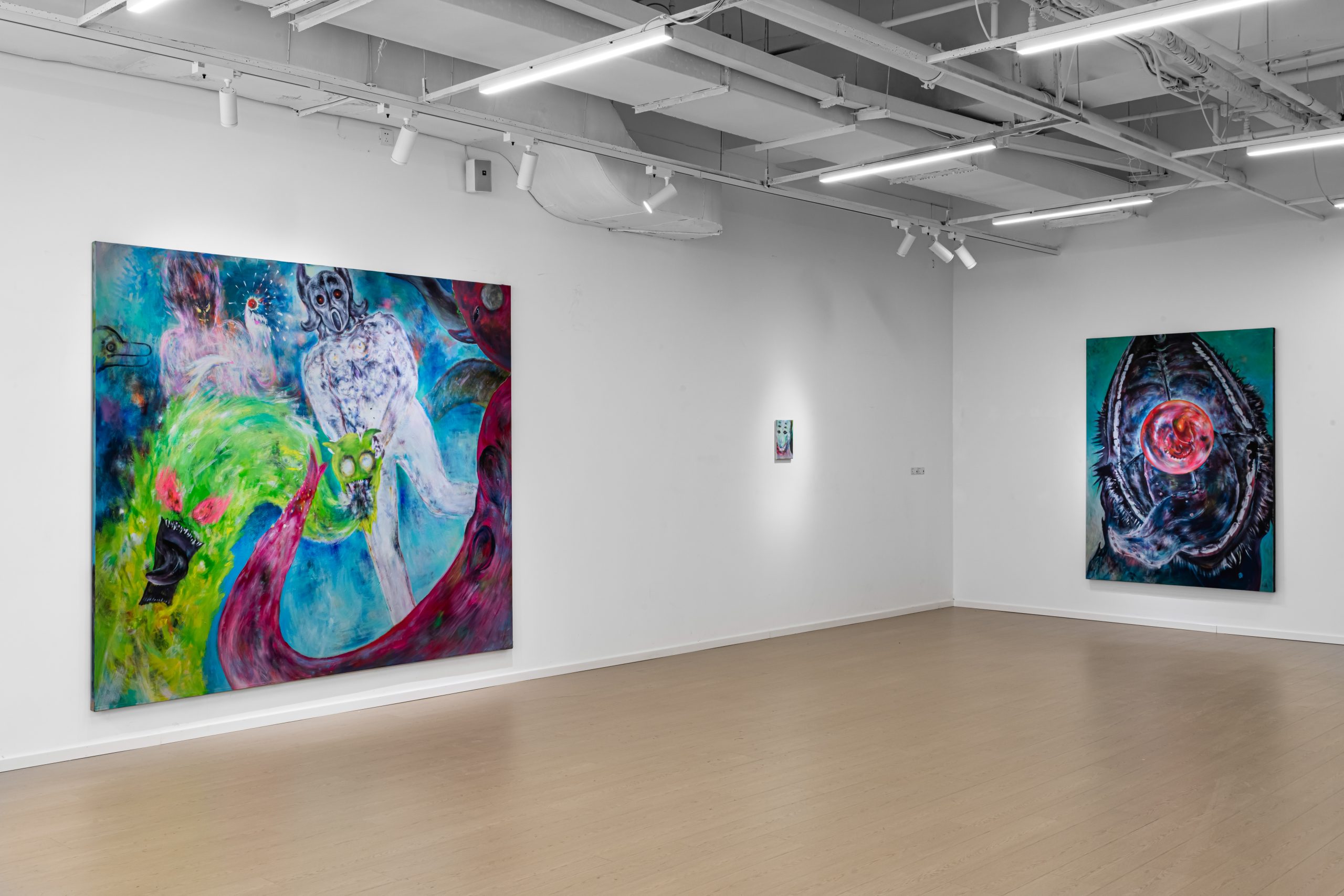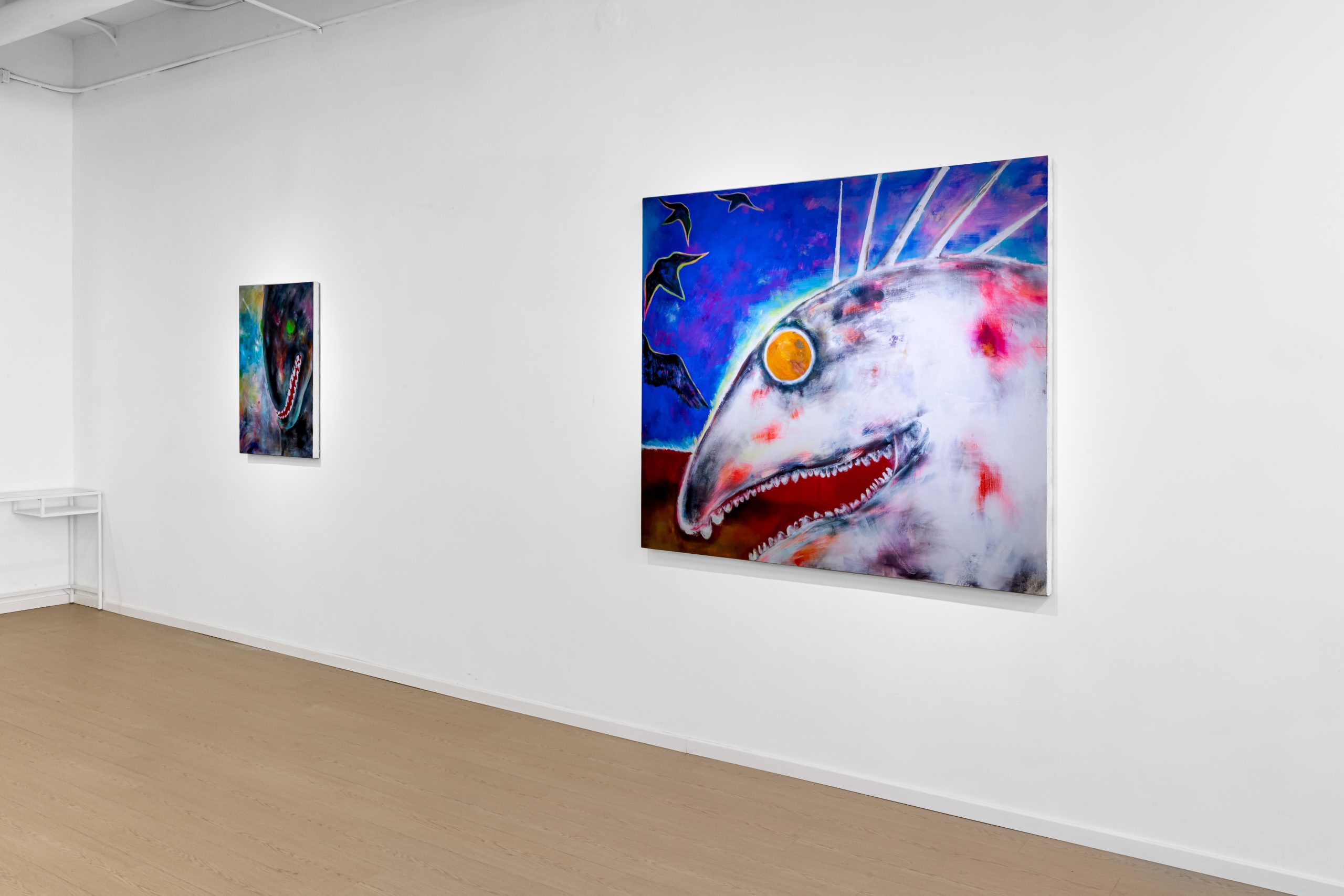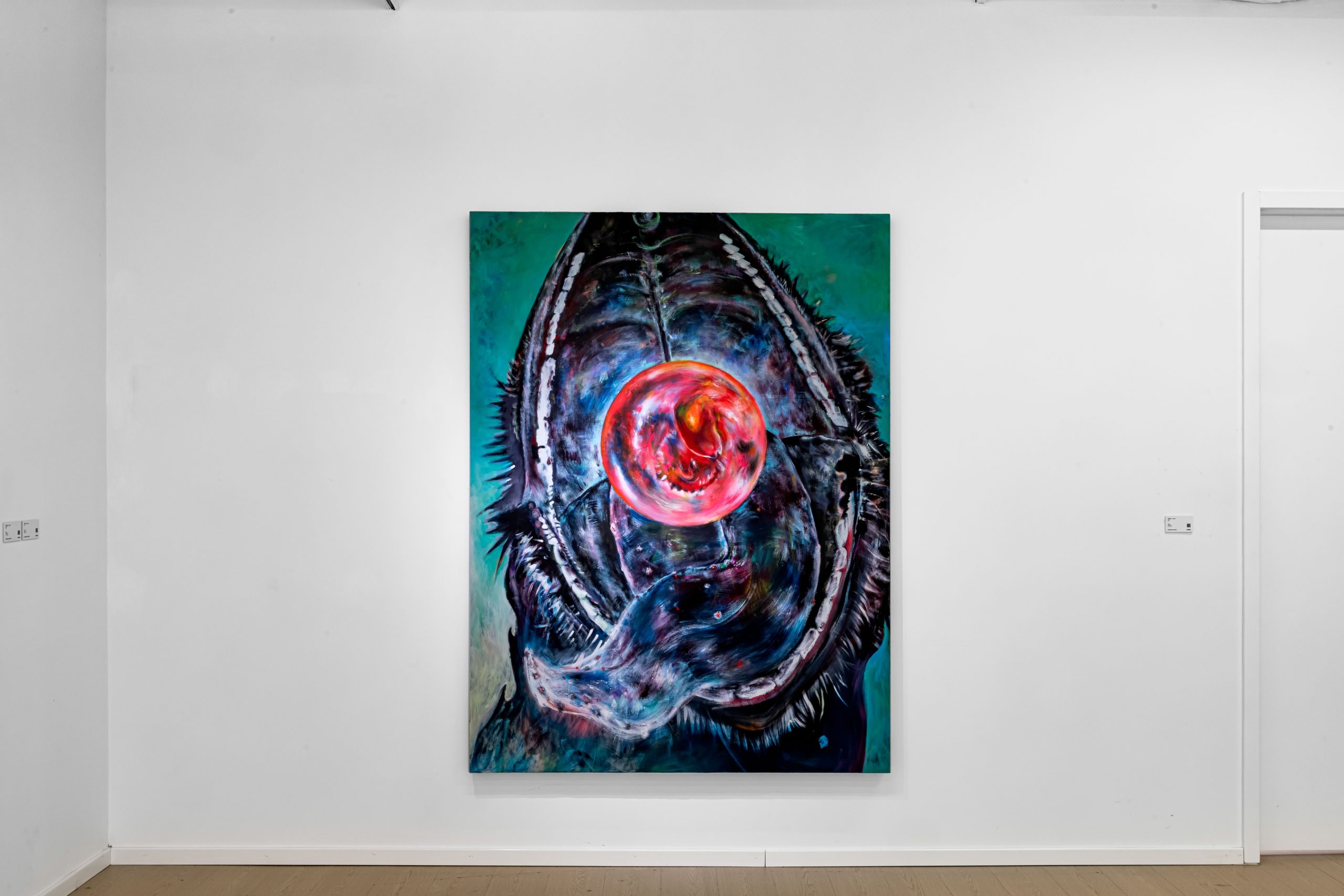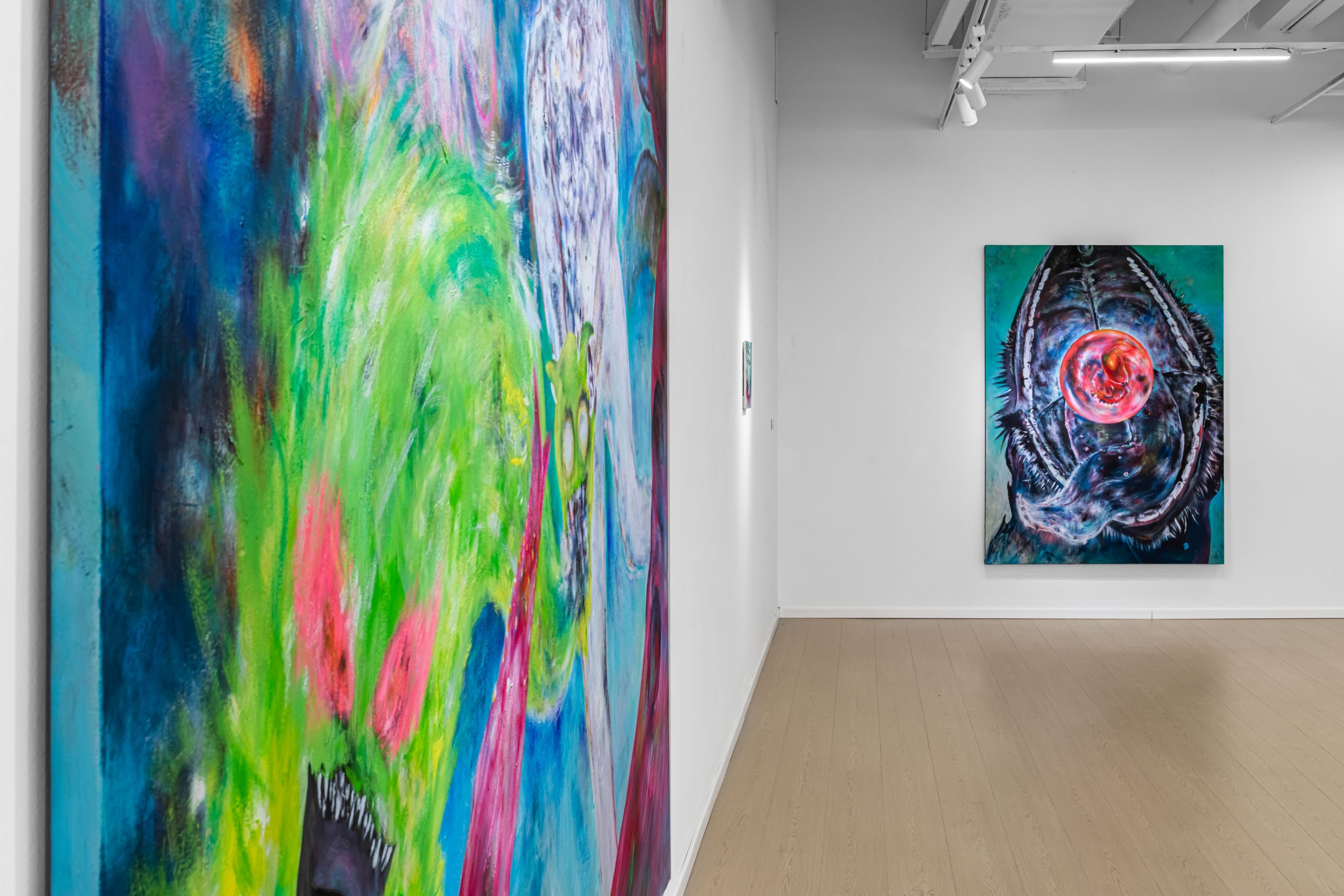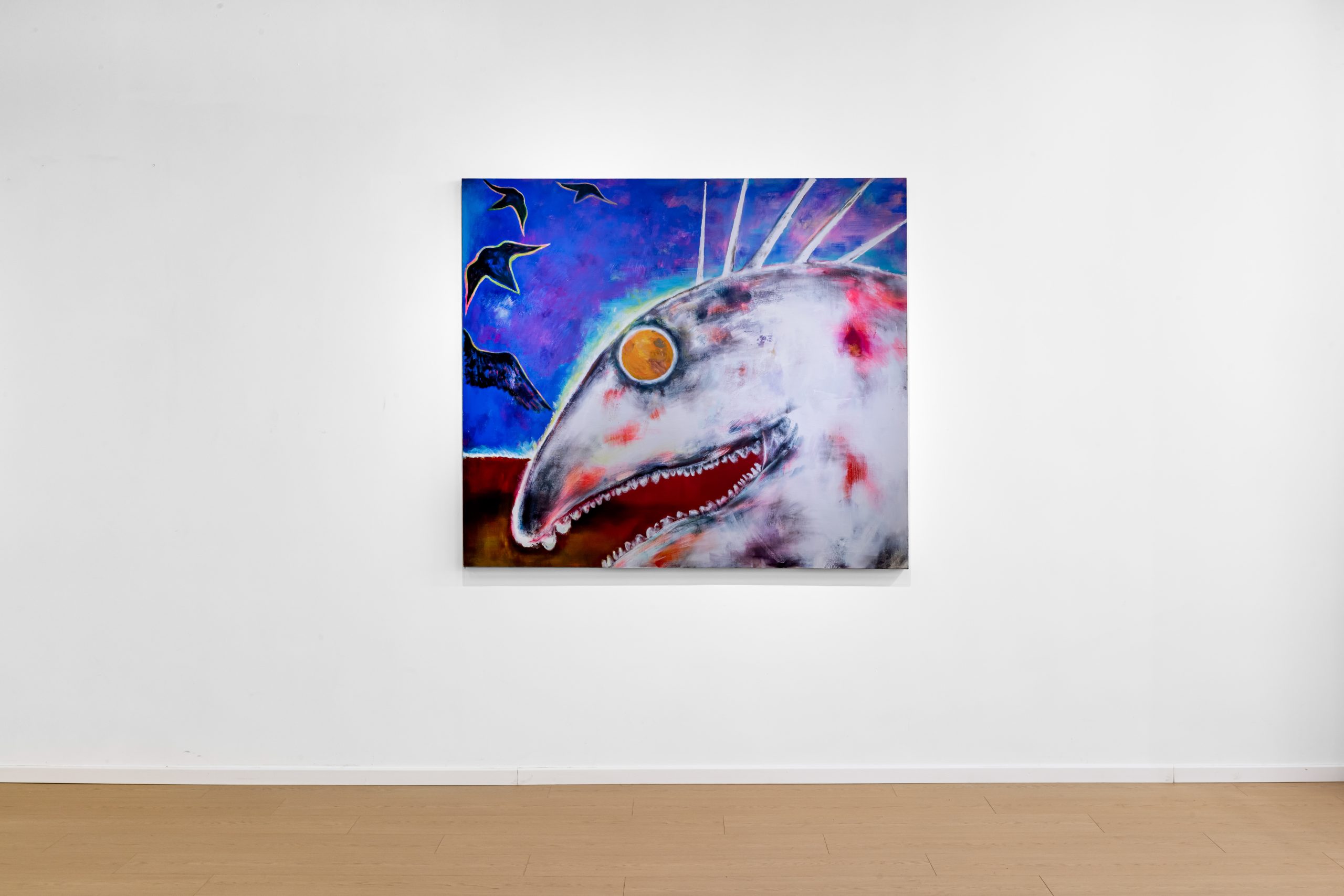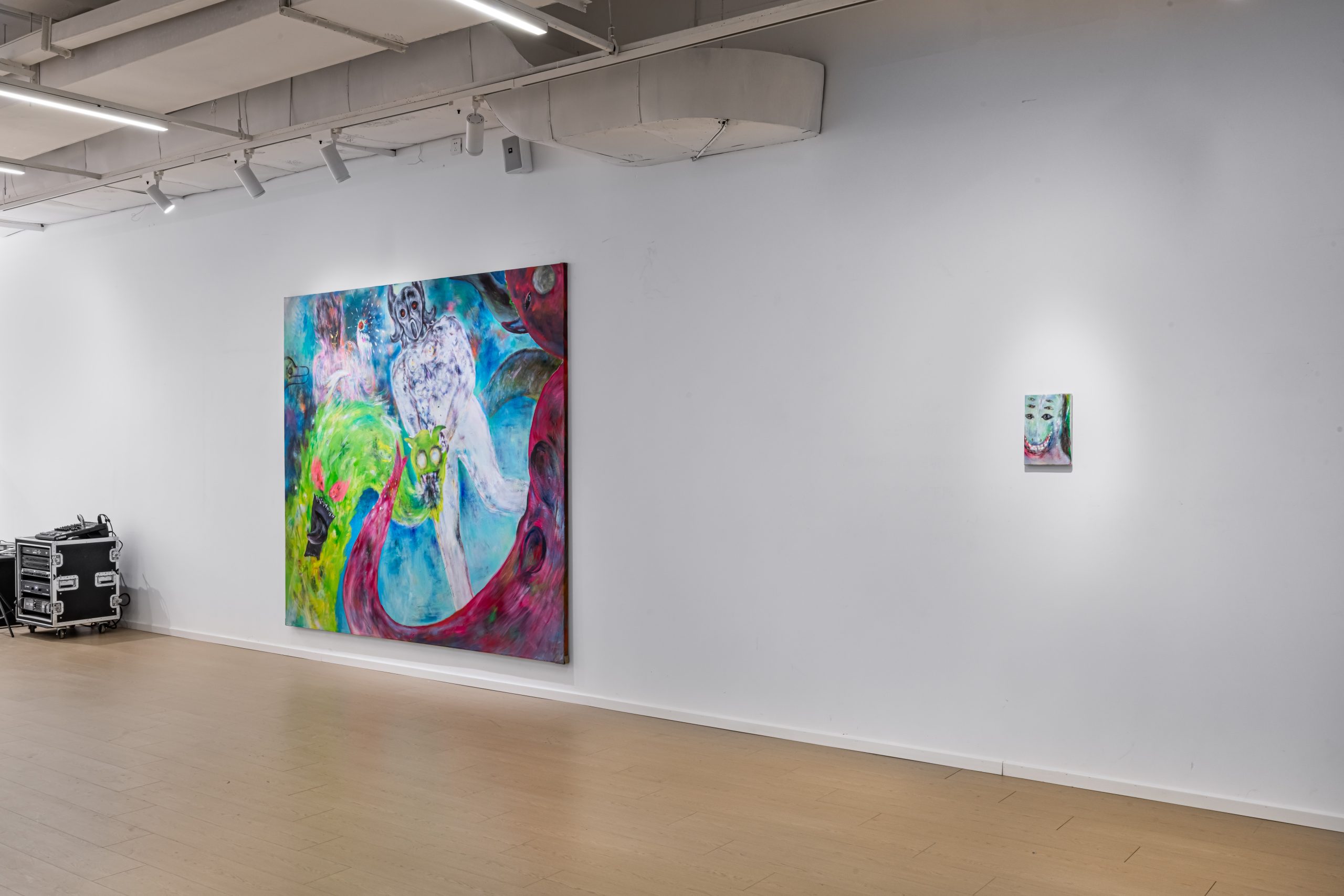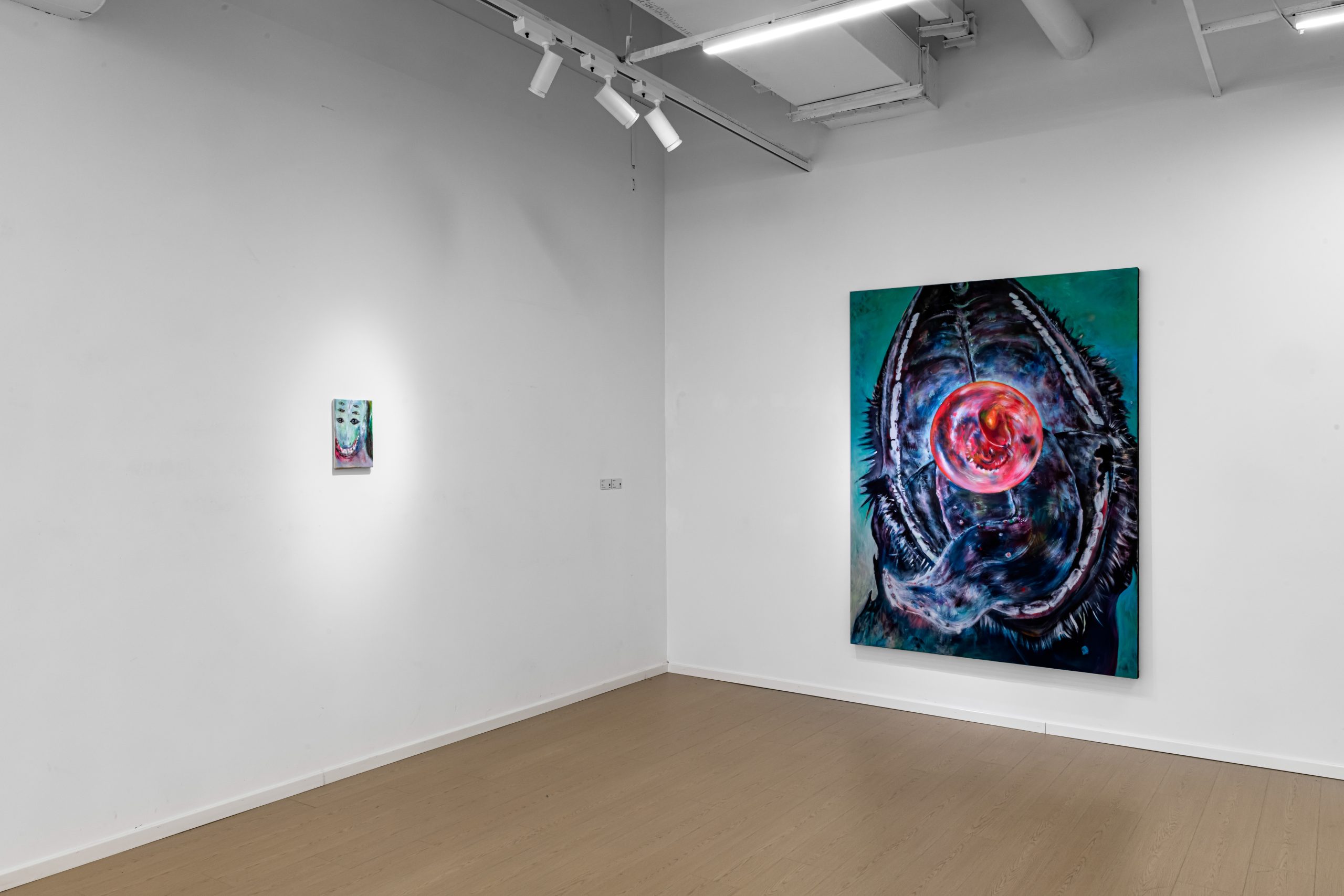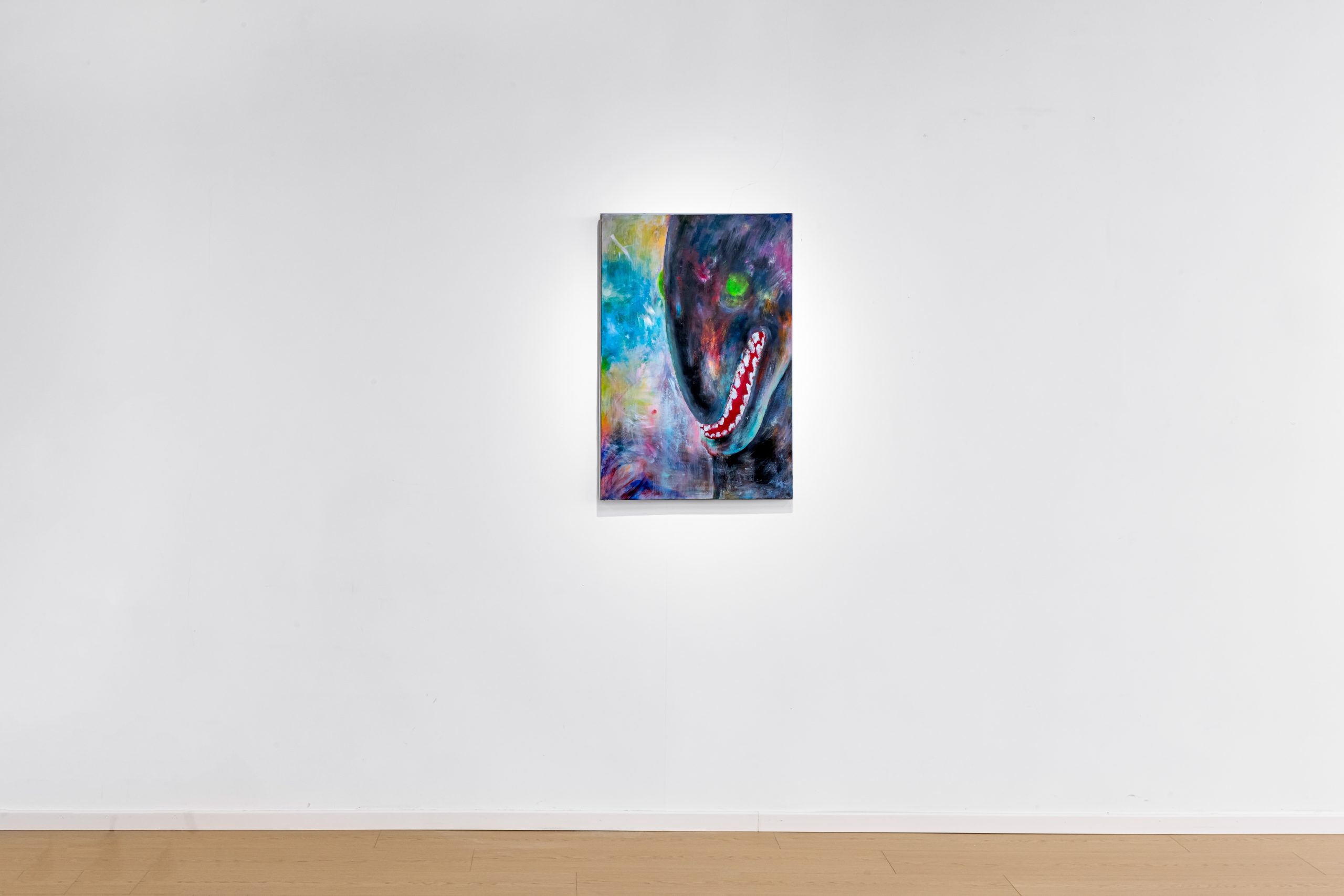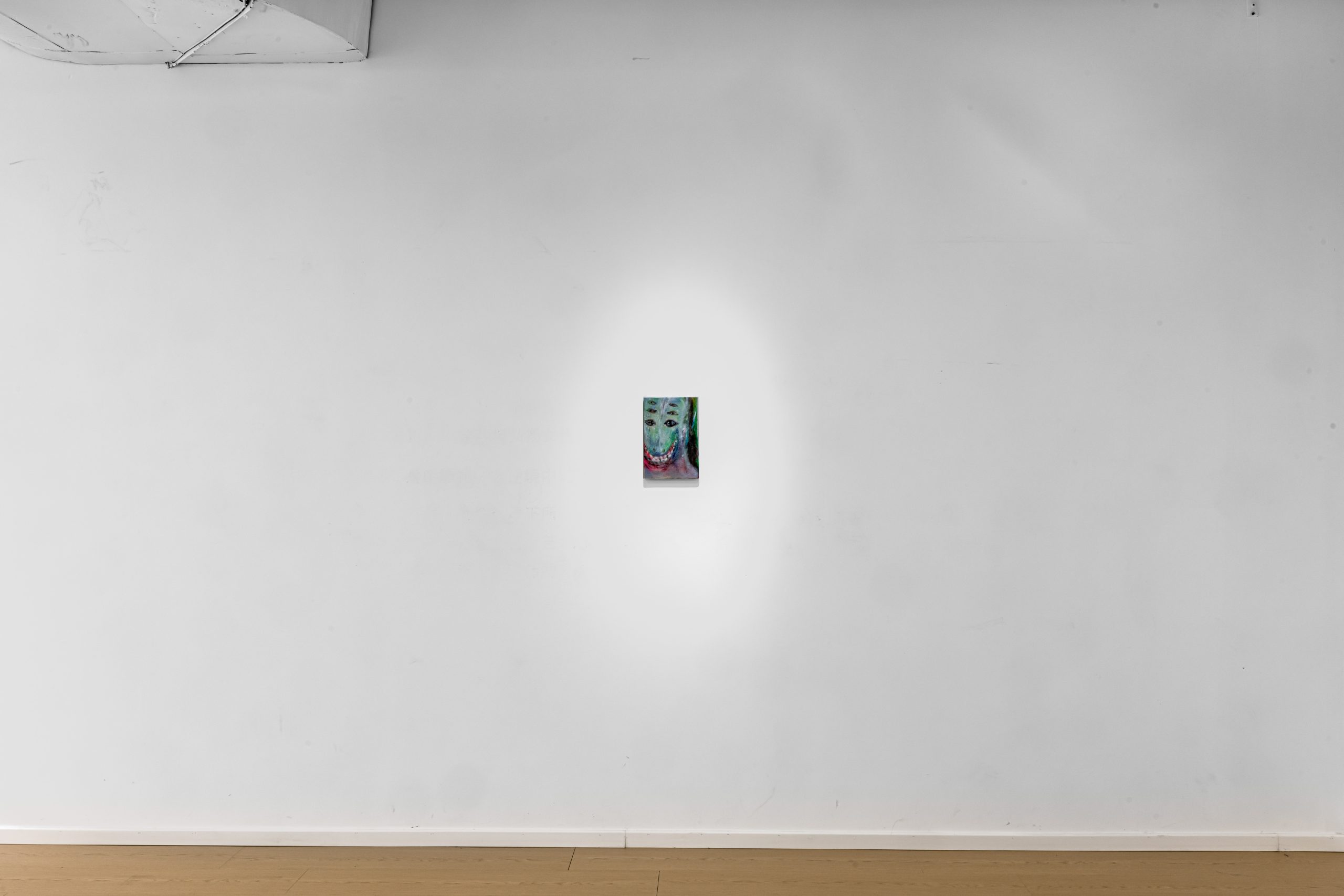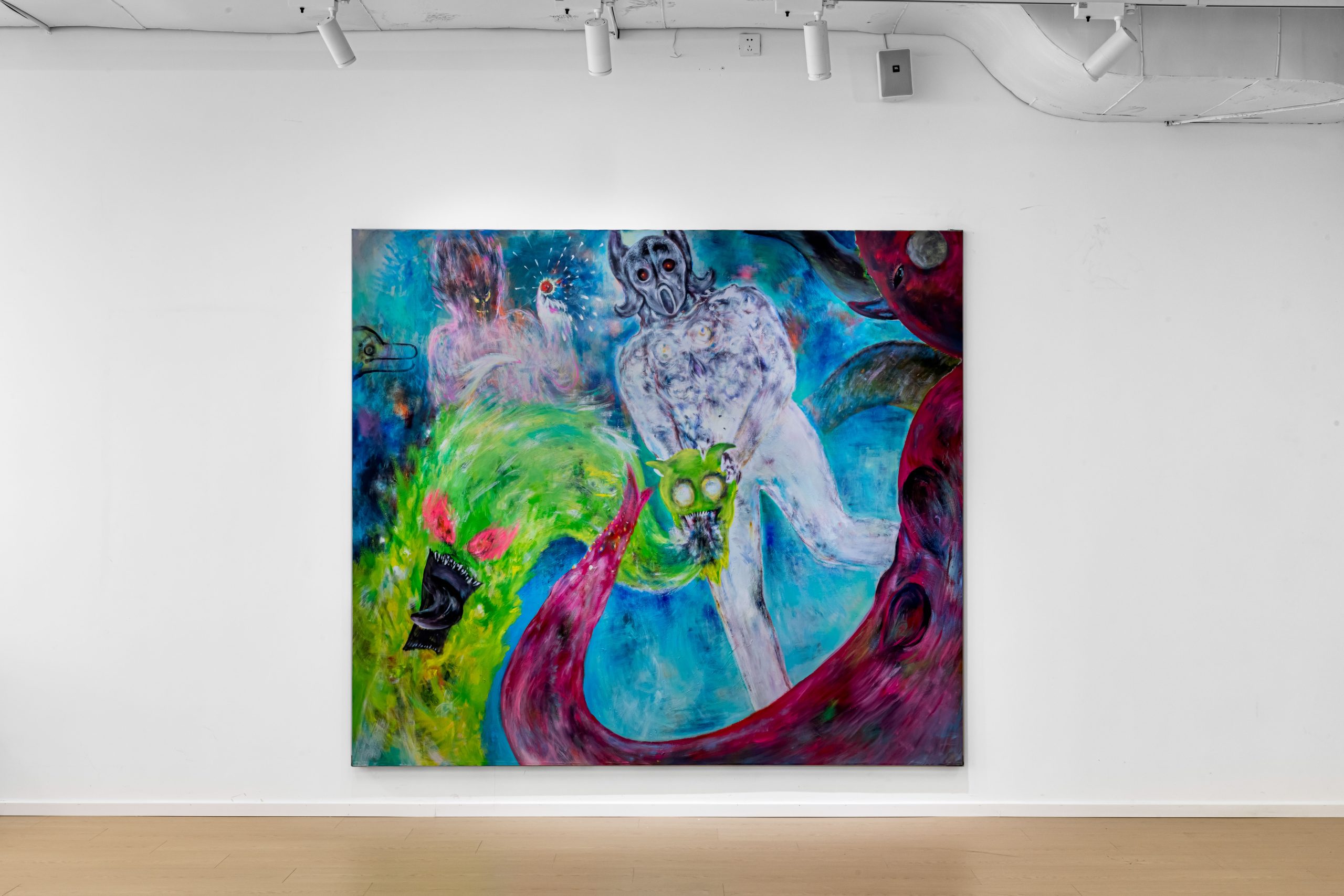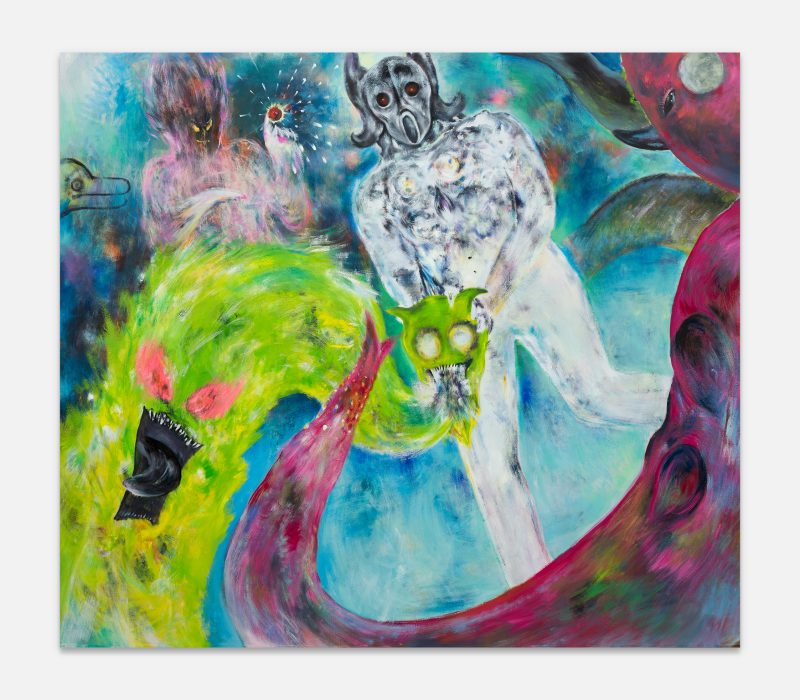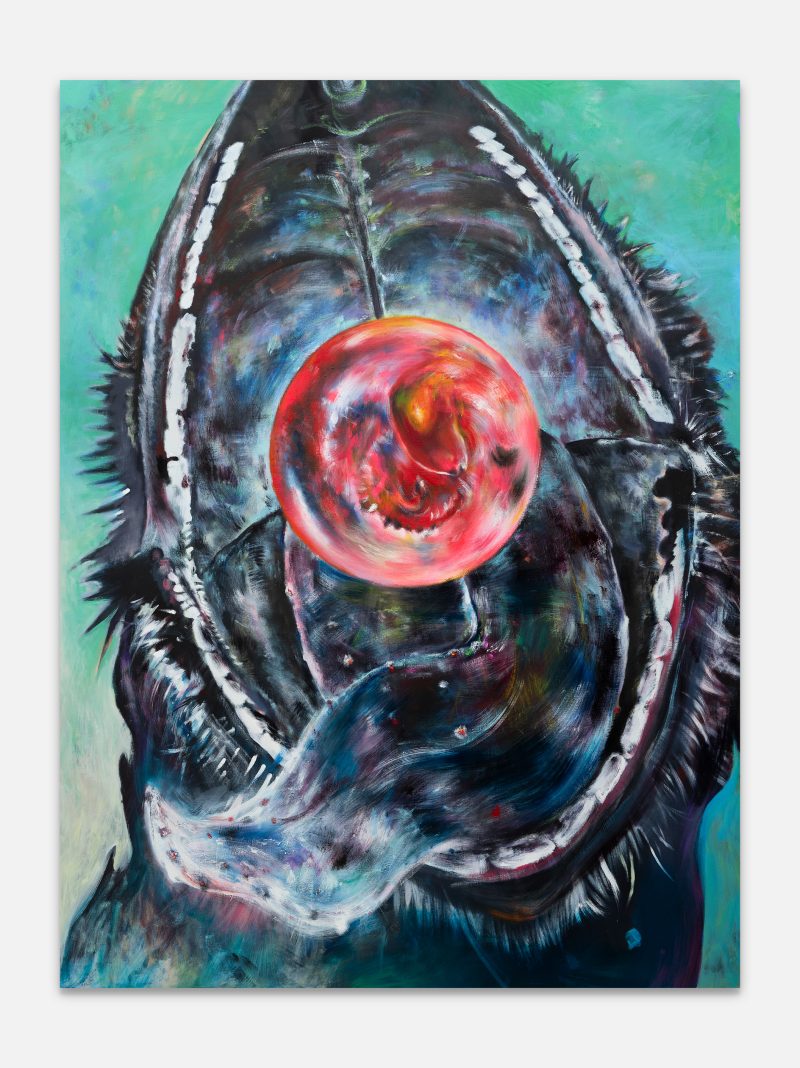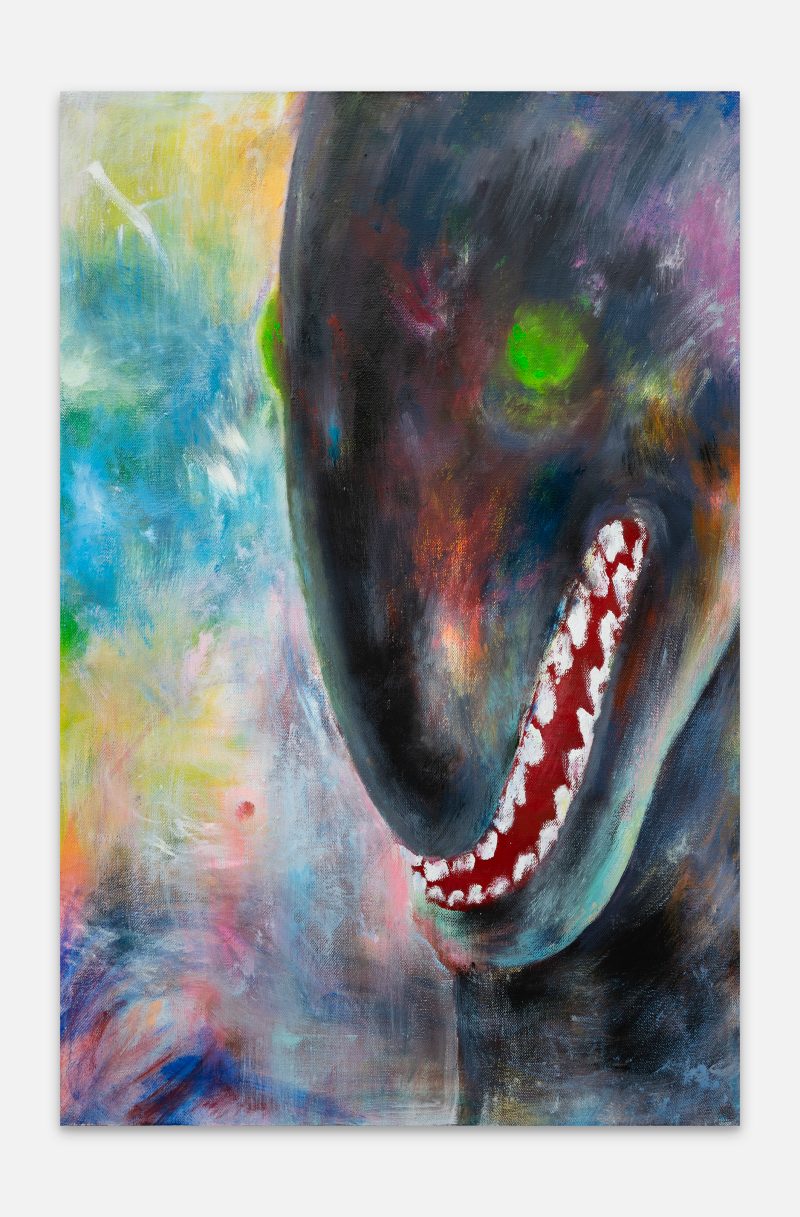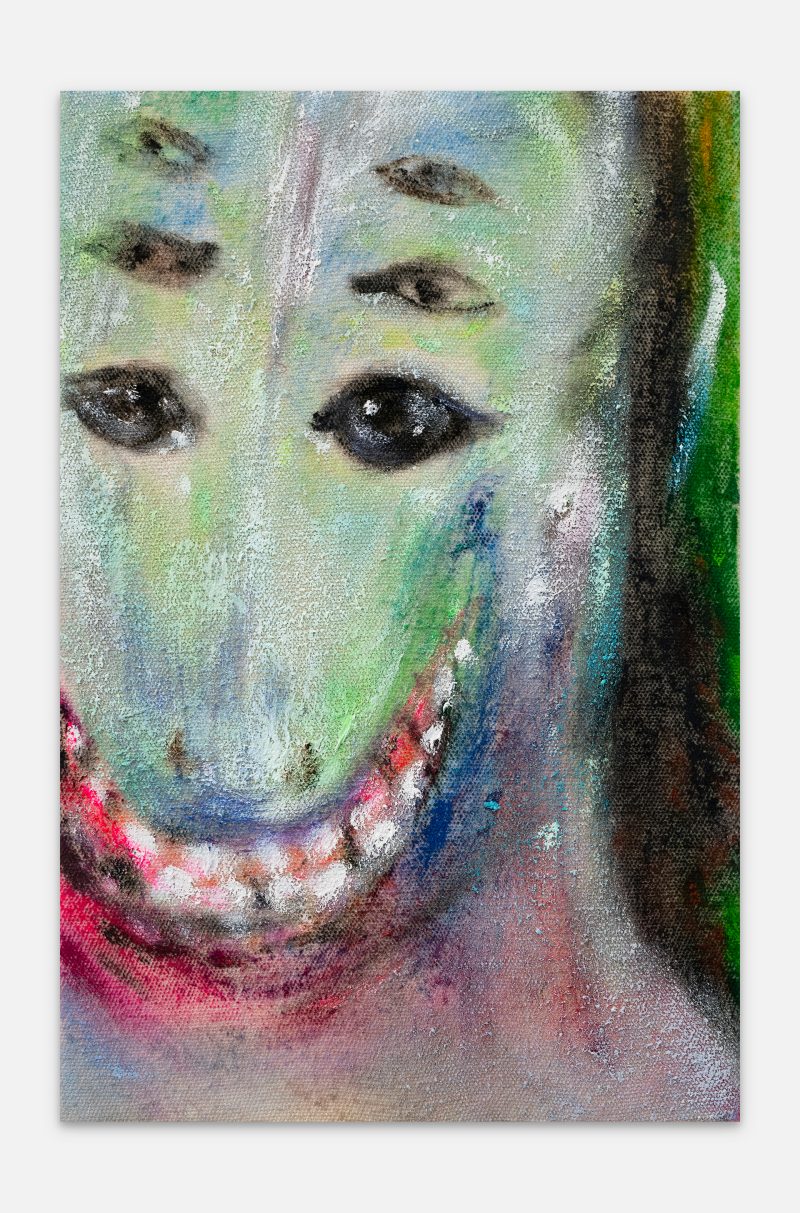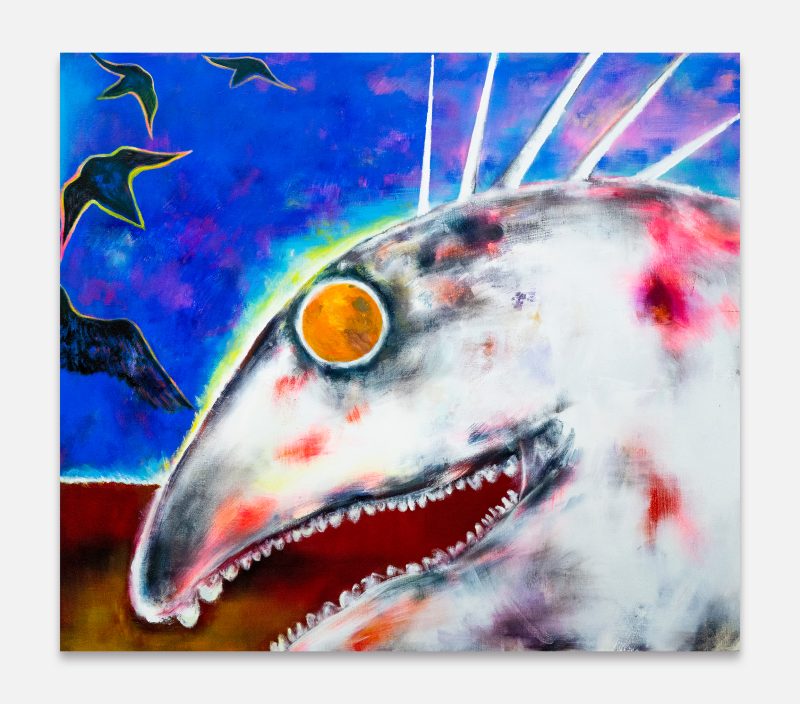
Li Kejin: A Terrible Beauty is Born
2024.03.16-2024.05.02
- Opening hours
10 : 00 – 18 : 00
Tuesday – Saturday - Location:
No. 1, -1F Sunken Garden, Lane 9, Qufu Road, Jing’an District, Shanghai
- Artist:
MadeIn Gallery is pleased to present Li Kejin’s solo exhibition “A Terrible Beauty is Born” on March 16th, 2024, featuring the artist’s signature paintings. Li explores the tension between narrative and painting to express “the alienation of human beings in a state of uncontrolled mind”. The apparent loss of mental control in his picture being merely an appearance, the root lies in the rifts among people’s minds. Hell is other people. Through his paintings, Li acknowledges and plays with the complexity of the human psyche, particularly its darker sides as triggered by fear. This, in turn, inspires a contemplation of what fear truly means to each individual. Li renders as the subject of painting a monster with its ghastly teeth, icy tentacles, and gloomy shell, thereby intensifying the generation of a new sublimity.
The image of teeth is visible throughout the five works featured in this exhibition, suggesting the horror of devouring. Bob, the culprit in Laura’s case from David Lynch’s Twin Peaks, is a demon capable of possession with disheveled hair, eerie smile, and piercing eyes. He possesses Leland to kill his daughter Laura. In the first painting that viewers encounter in the exhibition, Bob is transformed by the artist into a demonic figure with multiple eyes and a gaping bloody mouth. With all the residents in town harboring their own secrets, he may well be perceived as a soul devourer. From here, Li unfolds his creation while referencing the storyline of Twin Peaks.
Nightfall No.2, Trepidation, and Seal are reinterpretations of the core scenes from Isaac Asimov‘s novel Nightfall. According to the latter, the planet Kalgash experiences “nightfall” once every 2049 years. Asimov captures in detail how violence grows out of horror as the night falls. In Nightfall No.2 and Trepidatio, Li emphasizes the protruding eyes and mouths of the monsters on the brink of devouring each other, whereas the character in Seal wields a magical ancient Aztec mask to collect souls, transforming them into light energy to escape the encroaching darkness.
Raw, the concluding work in the exhibition, features spreading tentacles and a bright red embryo as a symbol of both destruction and rebirth. The artist freezes a deliberately ambivalent moment that leaves us unsure of whether the embryo is being devoured or disgorged by the tentacles. A narrative tension is created, leaving space for interpretation and imagination in future works.
Li Kejin confidently integrates his personal experience of painting with a reflection and questioning of it. As he candidly admits, the ambiguous prospects of painting causes him distress, yet such distress becomes the driving force of his sustained practice. The artist’s firm conviction in what he paints keeps within bounds conflicting, even contradictory attitudes and techniques. Through repeated depictions, he either reduces them to a resonance within the painting practice, or consolidates them into a positive expression, which serves as a strategy to establish self-discipline in the form of painting. The artist then seeks to confront the framework of realistic representational painting and to fight the creative inertia it originally seeds in him.
